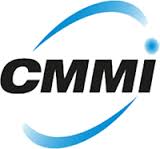 7. What different sources are needed to verify authenticity for CMMI implementation?
7. What different sources are needed to verify authenticity for CMMI implementation?
There are three different sources from which an appraiser can verify that an organization followed the process or not.
Instruments: An instrument is a survey or questionnaire provided to the organization, project, or individuals before starting the assessment so that beforehand the appraiser knows some basic details of the project.
Interview: An interview is a formal meeting between one or more members of the organization in which they are asked some questions and the appraiser makes some judgments based on those interviews. During the interview the member represents some process area or role which he performs. For instance, the appraiser may interview a tester or programmer asking him indirectly what metrics he has submitted to his project manager. By this the appraiser gets a fair idea of CMMI implementation in that organization.
Documents: A document is a written work or product which serves as evidence that a process is followed. It can be hard copy, Word document, email, or any type of written official proof.
The following figure is the pictorial view of the sources used to verify how compliant the organization is with CMMI.
8. Which model should we use and under what scenarios?
Staging defines an organization process implementation sequence. So staging is a sequence of targeted process areas that describe a path of process improvement the organization will take. For instance, you cannot do your project planning (Level 2) if you have not done requirements management (Level 2). While in the continuous model you select certain process areas even if they’re linked with other process areas and mature there.
So when your organization should only concentrate on specific process areas you will likely go for the continuous model. But if you want your organization to have a specific plan and to achieve not only the specific process but also any interlinked process within that process area you should go for the continuous model.
9. Can you explain capability levels in a continuous representation?
The continuous model is the same as the staged model only that the arrangement is a bit different. The continuous representation/model concentrates on the action or task to be completed within a process area. It focuses on maturing the organizations ability to perform, control, and improve the performance in that specific performance area.
Capability Level 0 Incomplete: This level means that any generic or specific practice of capability level 1 is not performed.
Capability Level 1: Performed: The capability level 1 process is expected to perform all capability level 1 specific and generic practices for that process area. In this level performance may not be stable and probably does not meet objectives such as quality, cost, and schedule, but still the task can be done.
Capability Level 2: Managed: Capability level 2 is a managed process planned properly, performed, monitored, and controlled to achieve a given purpose. Because the process is managed we achieve other objectives, such as cost, schedule, and quality. Because you are managing, certain metrics are consistently collected and applied to your management approach.
Capability Level 3: Defined: The defined process is a managed process that is tailored from an organization standard. Tailoring is done by justification and documentation guidelines. For instance your organization may have a standard that we should get an invoice from every supplier. But if the supplier is not able to supply the invoice then he should sign an agreement in place of the invoice. So here the invoice standard is not followed but the deviation is under control.
Capability Level 4: Quantitatively Managed: The quantitatively managed process is a defined process which is controlled through statistical and quantitative information. So from defect tracking to project schedules all are statistically tracked and measured for that process.
Capability Level 5: Optimizing: The optimizing process is a quantitatively managed process where we increase process performance through incremental and innovative improvements.
Continuous representation is the same as staged only that information is arranged in a different fashion. The biggest difference is one concentrates on a specific process while the other brings a group of processes to a certain maturity level.